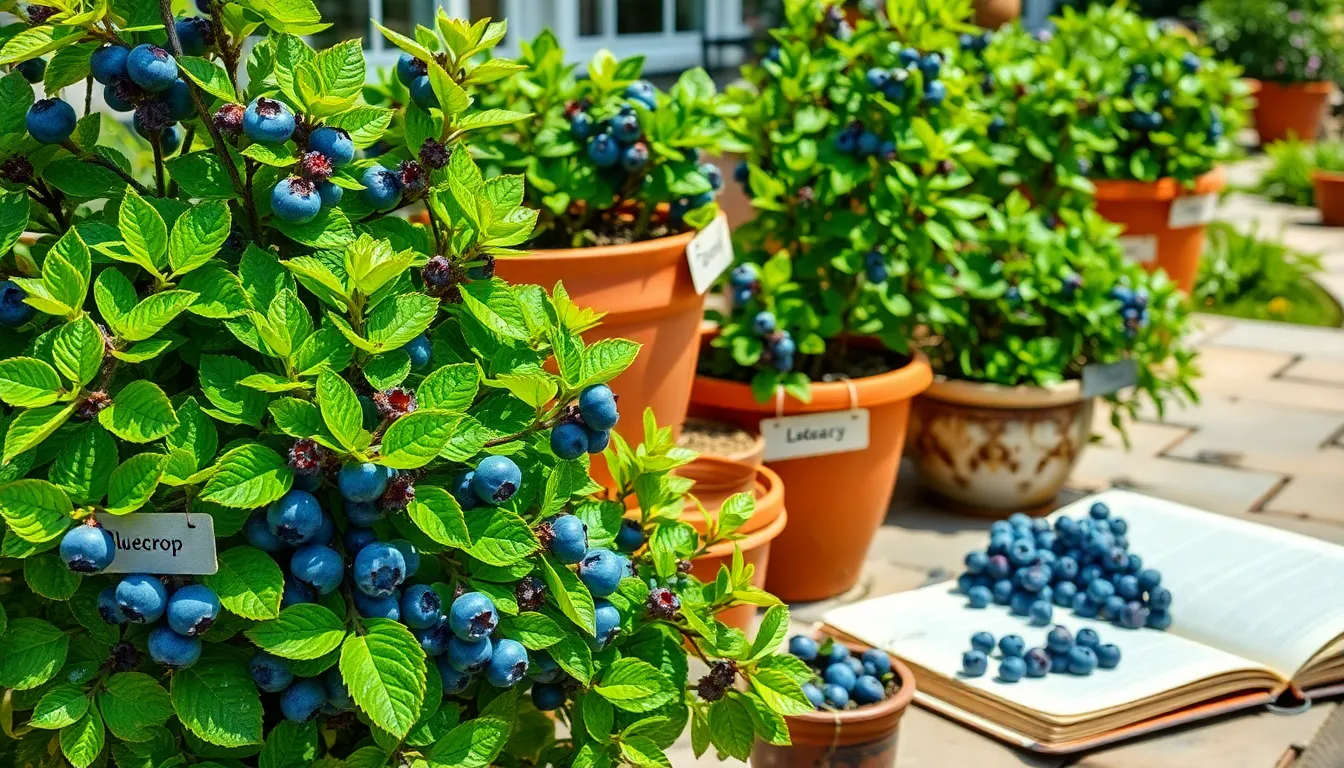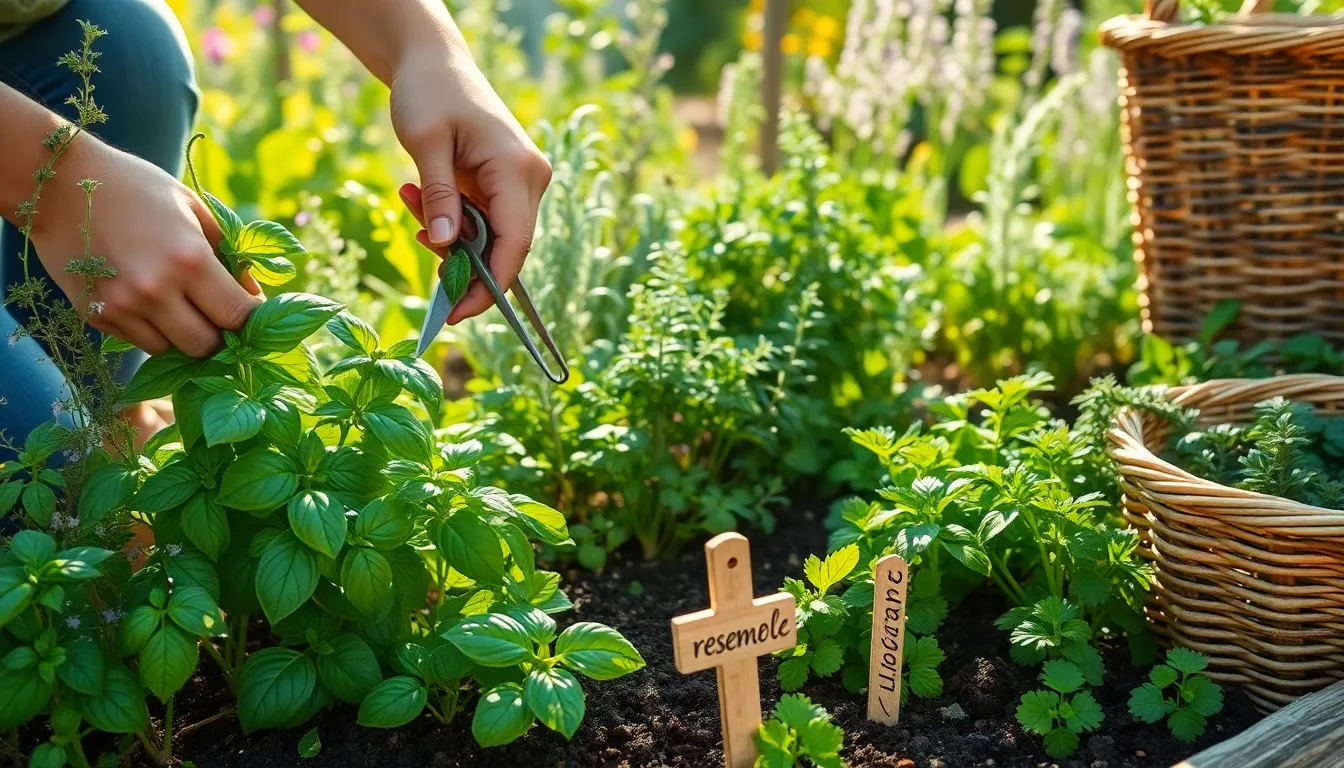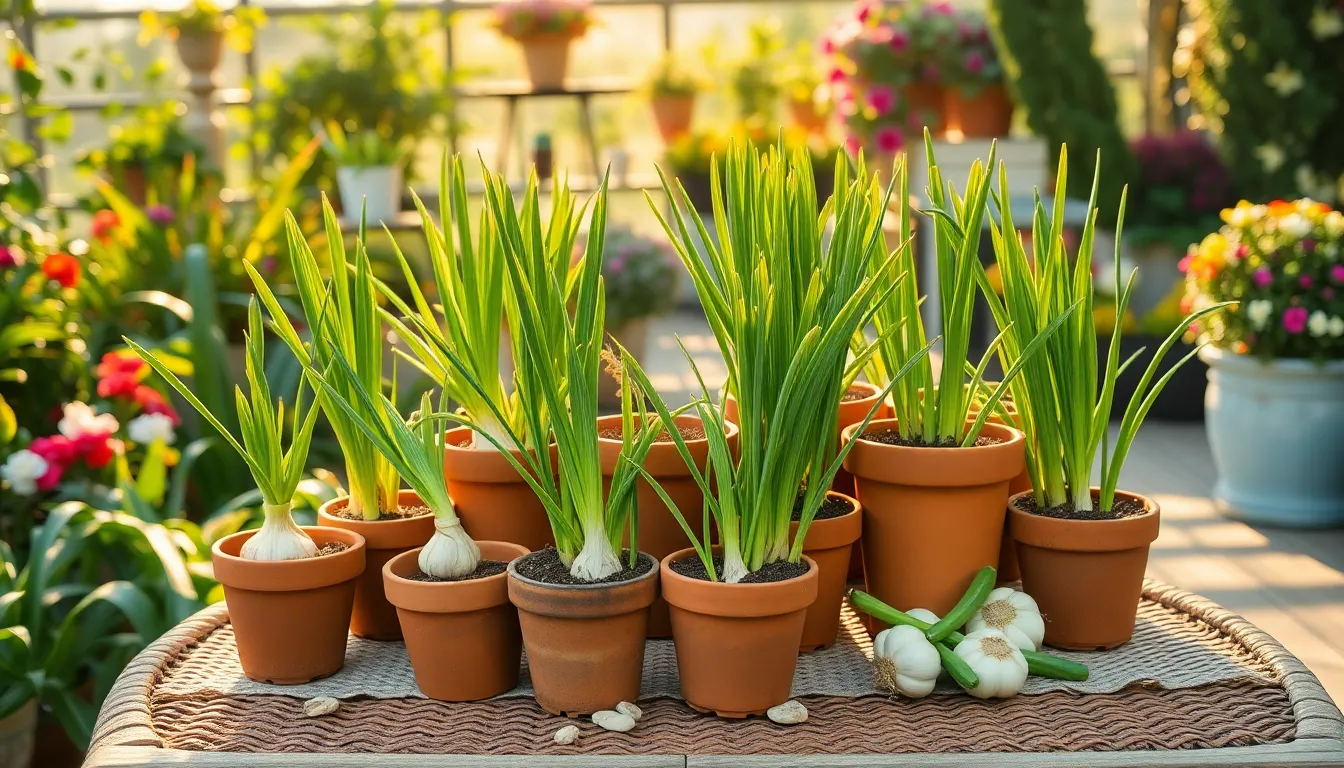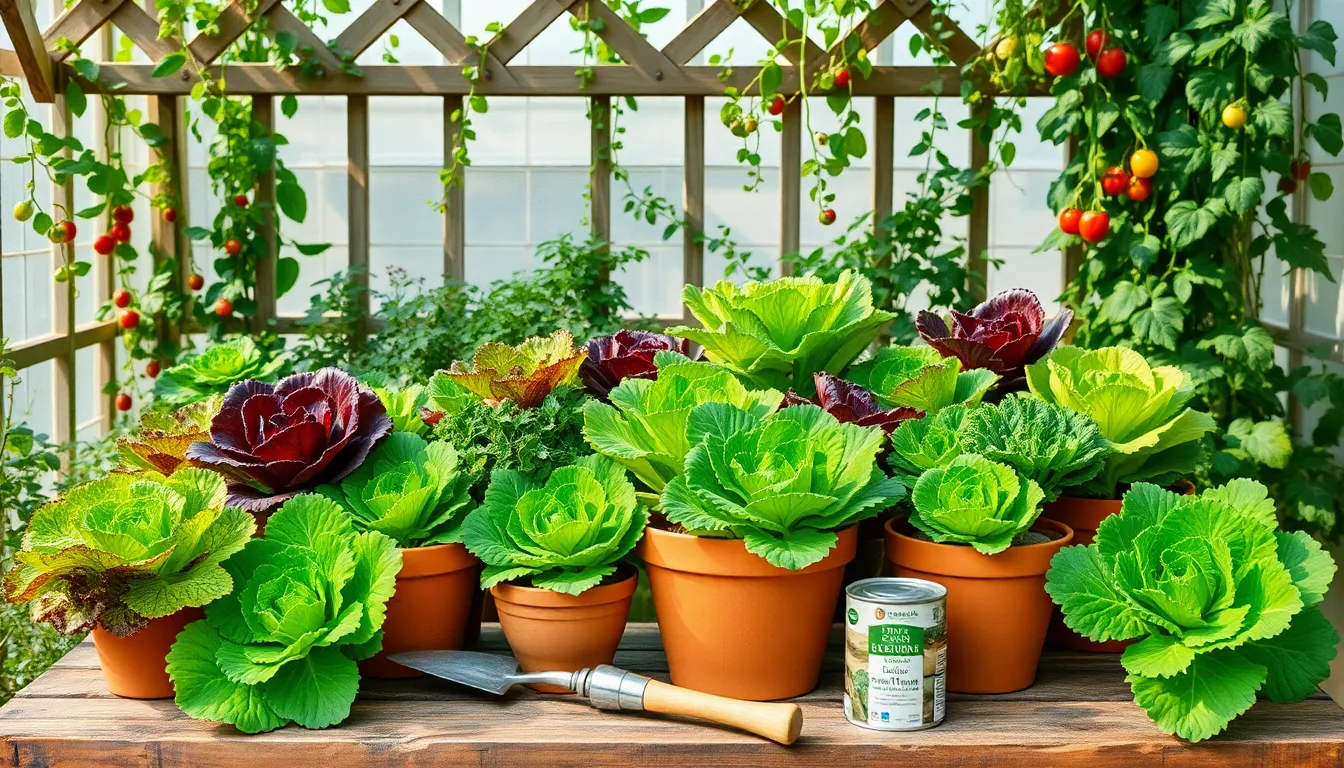Imagine stepping onto your patio on a crisp morning, a hot cup of coffee in hand, and plucking juicy, sun-kissed blueberries from the bushes you’ve nurtured yourself. Growing blueberries in pots isn’t merely a way to save space; it’s an invitation to bring the lush bounty of a berry patch into your home, no matter the size of your living area. Whether you’re a seasoned gardener with a love for experimentation or a beginner eager to embark on a fruitful journey, cultivating blueberries in containers offers a rewarding challenge brimming with possibilities.
Blueberries are a garden treasure, renowned for their sweet-tart flavor and vibrant color, but their cultivation can often seem daunting. This article will demystify the process, guiding you through the essentials of pot selection, soil composition, and watering strategies to ensure your blueberry plants thrive. You’ll discover the secrets to choosing the right blueberry variety for your climate, how to maintain optimal soil acidity, and when to expect your first harvest. So, roll up your sleeves and prepare to transform your balcony or backyard into a miniature berry paradise, where the fruits of your labor are as delicious as they are beautiful.
Choosing Suitable Blueberry Varieties
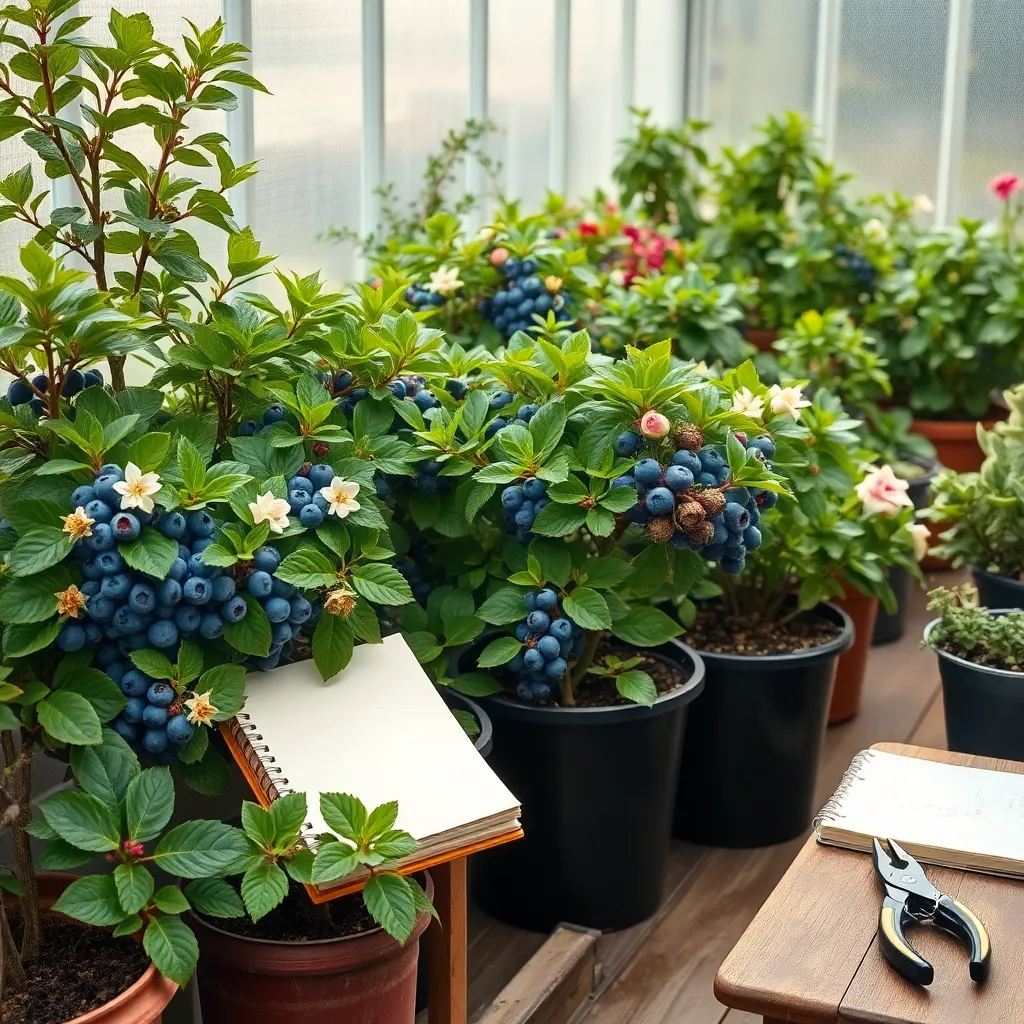
When selecting blueberry varieties for pot cultivation, consider the size of the plant and the climate of your region. Dwarf and half-high blueberries are excellent choices as they are naturally compact and well-suited for container growing.
It’s important to choose a variety that matches your local climate conditions. For colder climates, look for cold-hardy varieties like ‘Northblue’ or ‘Northcountry’, which can handle harsh winters.
In contrast, if you live in a warmer region, opt for Southern Highbush varieties such as ‘Sunshine Blue’ or ‘Misty’ which thrive in mild winter climates. These varieties are more heat-tolerant and can extend your growing season.
To ensure your potted blueberries thrive, use a well-draining, acidic potting mix. A mix containing peat moss, pine bark, and perlite provides the ideal conditions for blueberries, which prefer a pH of 4.5 to 5.5.
Place your pots in a sunny location where plants receive at least six to eight hours of sunlight daily. Consistent watering is crucial; keep the soil moist but not waterlogged, and consider using a drip irrigation system for more precise moisture control.
For advanced growers, experiment with different varieties to stagger harvest times and increase your yield. Consider planting multiple types in separate pots to enjoy a continuous supply of fresh blueberries throughout the season.
Ideal Pot Selection and Size
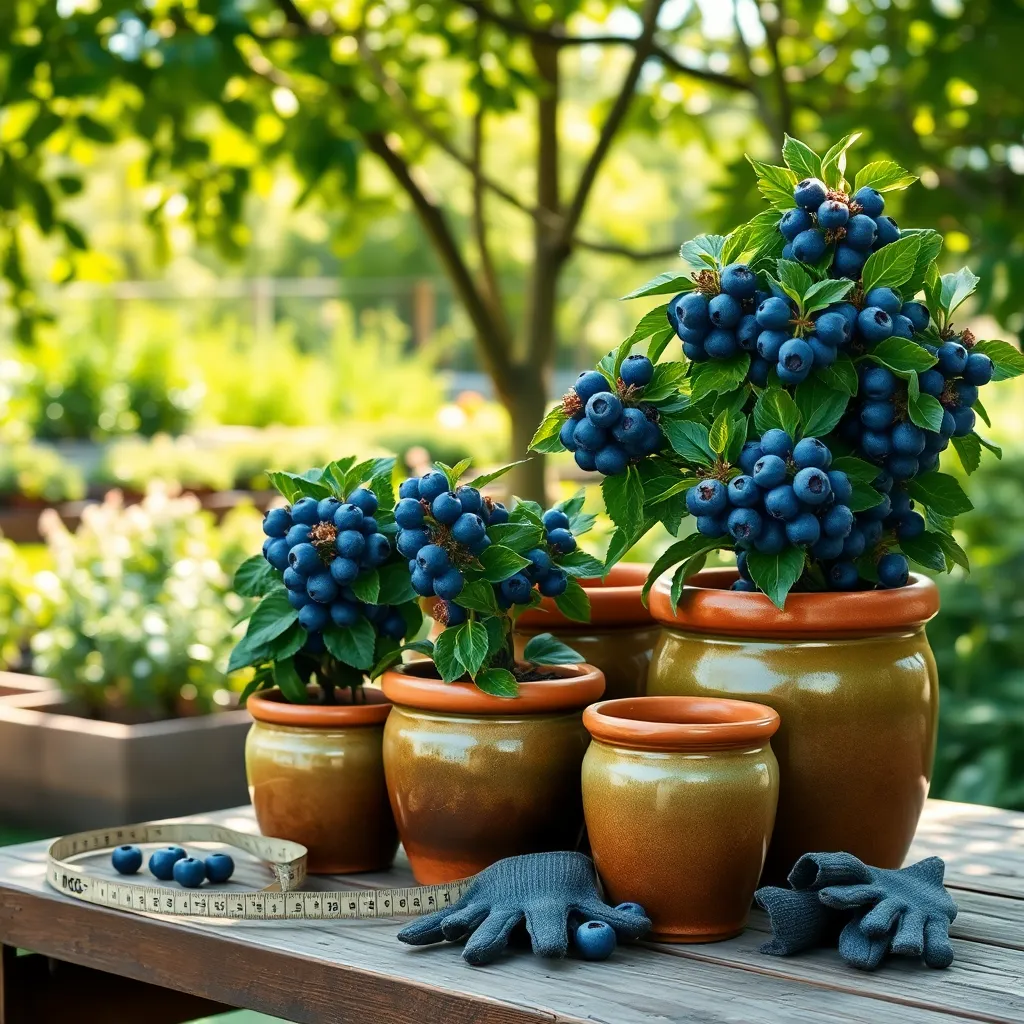
When growing blueberries in pots, the choice of container is crucial for the plants’ success. Begin with a pot that is at least 18 inches in diameter and 12 inches deep to provide ample room for root development.
Opt for pots made from materials like plastic, ceramic, or wood, each offering different benefits. Plastic pots are lightweight and retain moisture well, while ceramic or clay pots offer better insulation but may require more frequent watering.
Ensure your pot has adequate drainage holes to prevent waterlogging, which blueberries are particularly sensitive to. A layer of gravel or broken terracotta at the bottom can enhance drainage, safeguarding the roots from excess moisture.
To help manage the plant’s growth, consider using a pot with a wider top that tapers towards the bottom. This design not only supports the plant but also makes it easier to transplant if needed as your blueberry bush matures.
Preparing the Perfect Soil Mix
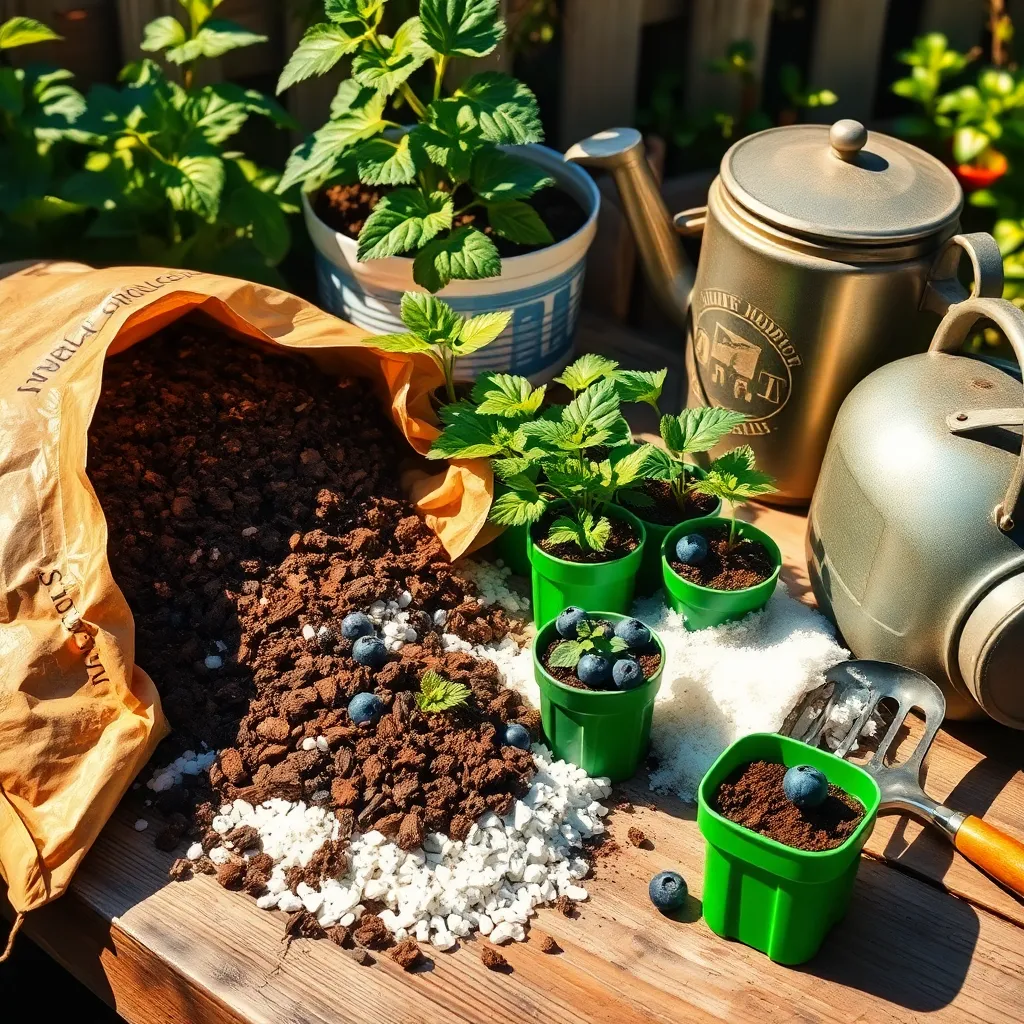
To grow blueberries in pots successfully, preparing the perfect soil mix is crucial. Blueberries thrive in a specific soil environment that mimics their natural conditions, which is acidic, well-draining, and rich in organic matter.
Start with a base of high-quality potting soil, ensuring it is free from any chemical additives that could harm the plants. Mix in peat moss or coconut coir to increase acidity and improve moisture retention, as blueberries prefer a soil pH between 4.5 and 5.5.
Incorporating perlite or coarse sand is essential to enhance drainage, preventing water from accumulating around the roots. For added nutrients, blend in some pine bark mulch or compost, which not only enriches the soil but also helps maintain the desired pH level over time.
It’s important to regularly test the soil pH using a simple home test kit, adjusting as necessary with sulfur or coffee grounds to maintain acidity. Watering should be frequent yet moderate, as blueberries like consistently moist soil but do not tolerate soggy conditions.
Optimal Watering and Drainage Tips
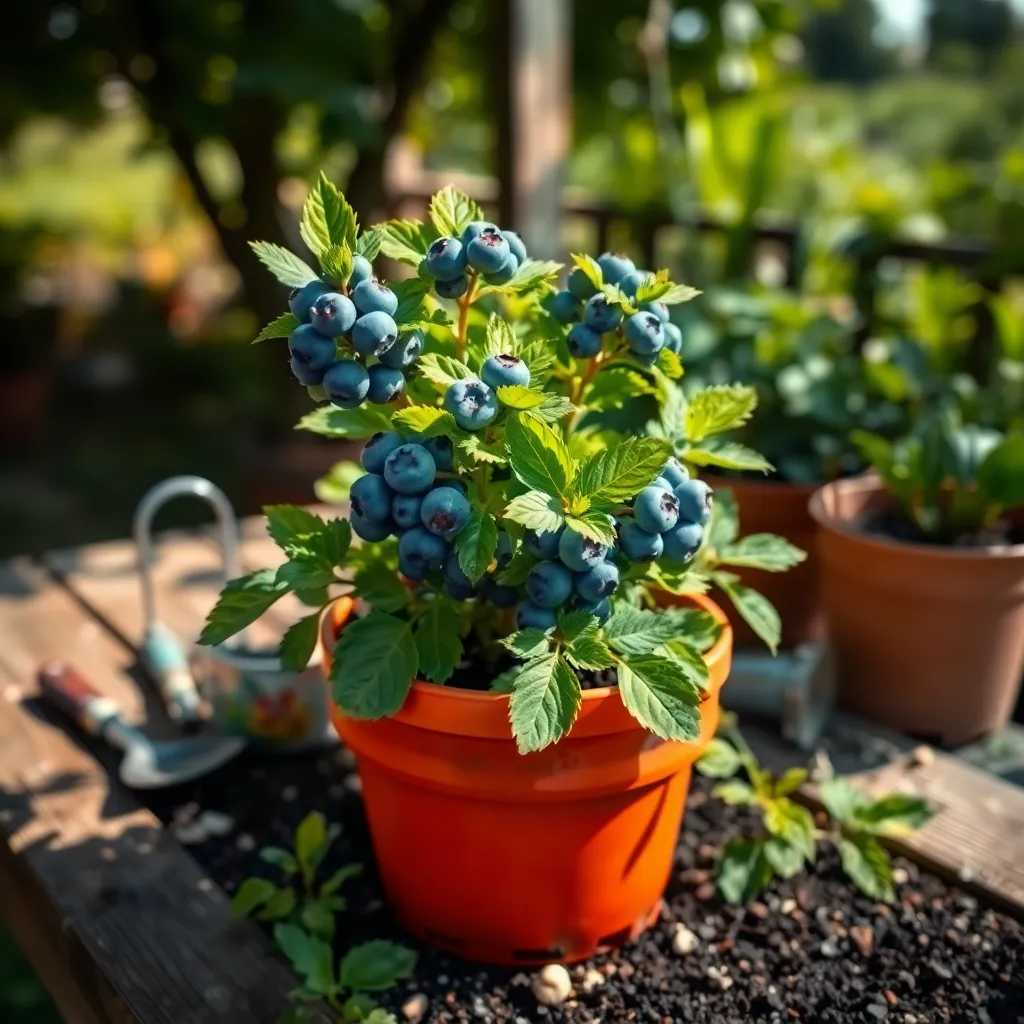
Effective watering and drainage are crucial for growing blueberries in pots successfully. Blueberries prefer consistently moist soil but dislike being waterlogged, which can lead to root rot.
Begin by choosing a pot with adequate drainage holes to prevent water accumulation at the bottom. It’s recommended to use a pot that’s at least 16 inches wide and deep to accommodate the blueberry plant’s root system.
During the growing season, aim to water your blueberry plant once or twice a week, adjusting based on weather conditions. In hot and dry climates, you may need to water more frequently, ensuring the top inch of soil remains consistently moist.
Mulching can be an excellent way to retain moisture and reduce the need for frequent watering. Use organic materials like pine bark or sawdust, which will also provide the acidic conditions blueberries thrive in.
To check if your plant needs water, stick your finger into the soil up to the first knuckle. If the soil feels dry at this depth, it’s time to water your plant thoroughly until you see excess water draining out of the pot.
For advanced care, consider setting up a drip irrigation system to ensure even watering and to minimize water use. This system can be particularly beneficial for gardeners who are unable to water regularly or for those managing multiple containers.
Managing Pests and Diseases in Pots
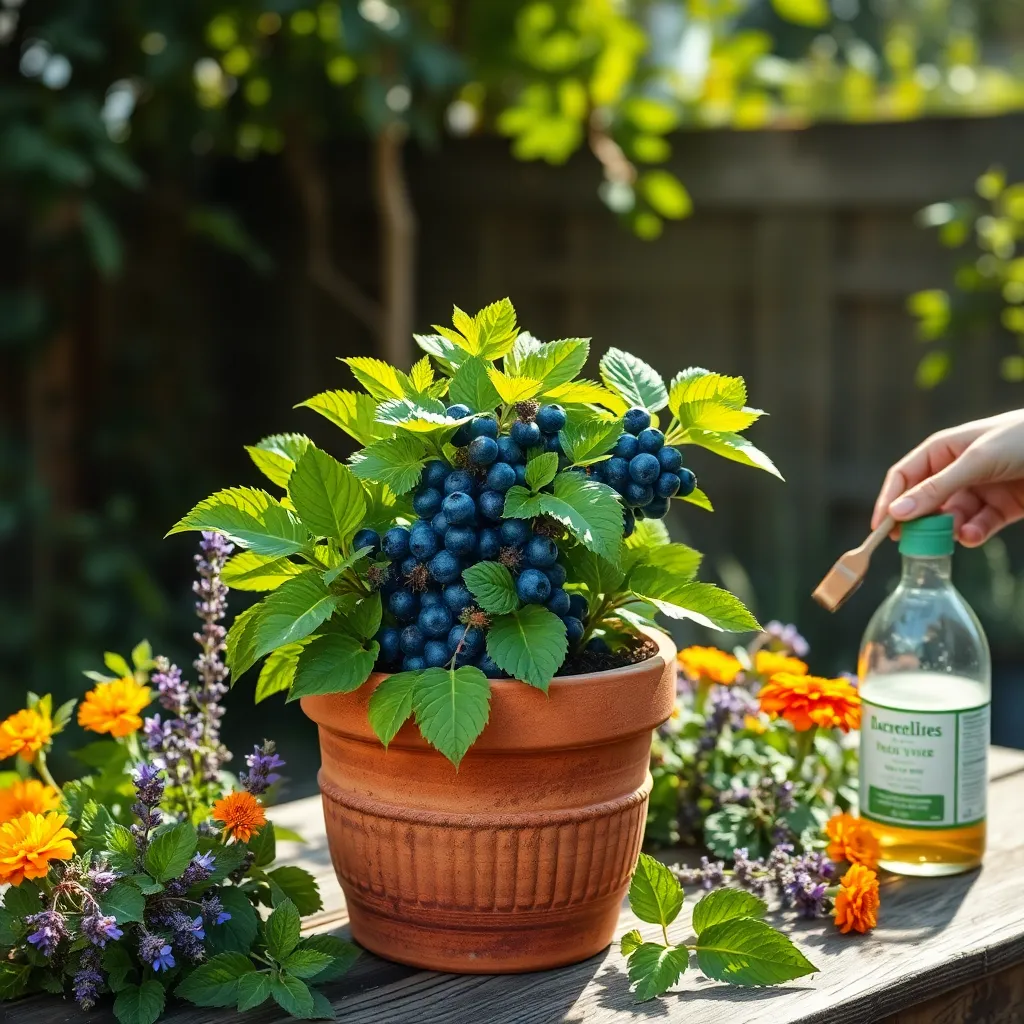
Managing pests and diseases in potted blueberries requires a proactive approach to ensure healthy plants. Regularly inspect your plants for signs of pests like aphids or spider mites, which are common in container gardening.
To combat these pests, you can use a gentle insecticidal soap solution that is safe for edibles. Apply the solution directly to the affected areas, ensuring that you cover the undersides of leaves where pests often hide.
Fungal diseases, such as powdery mildew, can also affect potted blueberries, especially in humid conditions. To prevent fungal issues, ensure your plant has adequate air circulation by spacing pots apart and pruning any dense foliage.
Another effective method for disease prevention is to use well-draining soil. A mix containing peat moss, pine bark, and perlite can help maintain the right moisture balance, reducing the risk of root rot.
Encourage natural predators, such as ladybugs, to visit your garden by planting companion plants like marigolds nearby. These beneficial insects can help control pest populations without the need for chemical interventions.
Lastly, regularly clean the pots and surrounding areas to remove any debris that could harbor pests or diseases. Consistent maintenance and observation will go a long way in keeping your potted blueberries thriving.
Conclusion: Growing Success with These Plants
In exploring the vibrant theme of growing blueberries in pots, we’ve uncovered five key relationship concepts that can enrich your personal connections. First, we discussed the importance of nurturing growth in a relationship, much like tending to a young blueberry plant. Second, the need for a strong foundation, akin to choosing the right pot and soil, ensures stability and resilience. Third, we highlighted the balance of give and take, similar to watering and fertilizing, that sustains a thriving bond. Fourth, the role of patience and time, comparable to waiting for the first fruitful harvest, was emphasized. Lastly, we touched on the adaptability required to face challenges, just as you would move a pot to capture the best sunlight.
As your actionable next step, choose one relationship in your life and identify an area where you can apply these nurturing principles today. To keep these insights close at hand, make sure to bookmark this article for future reference. Remember, your relationships are like a garden—tended with care, they will flourish. By embracing these concepts, you are planting the seeds for enduring relationship success. Here’s to cultivating love and happiness in your life’s garden!

